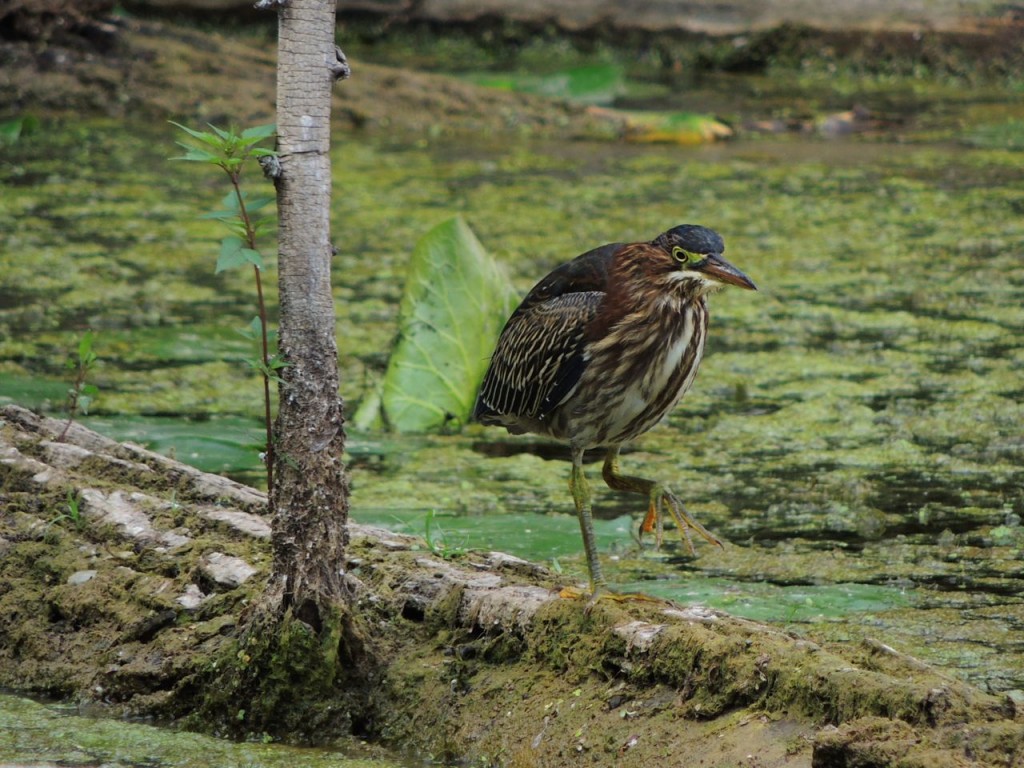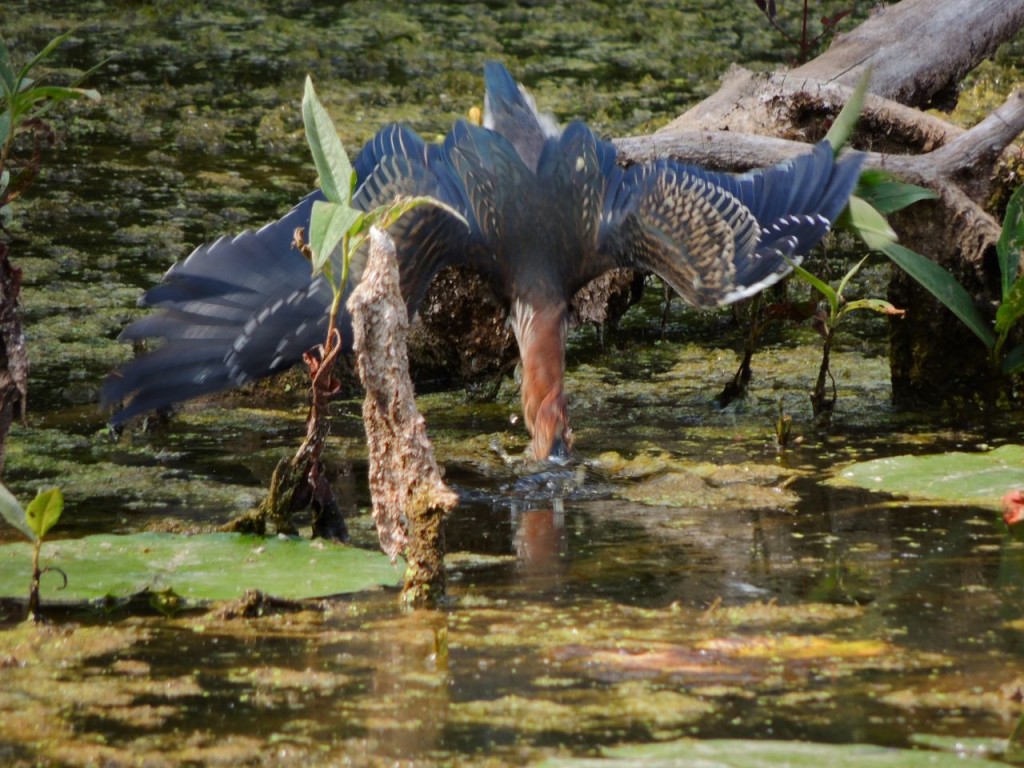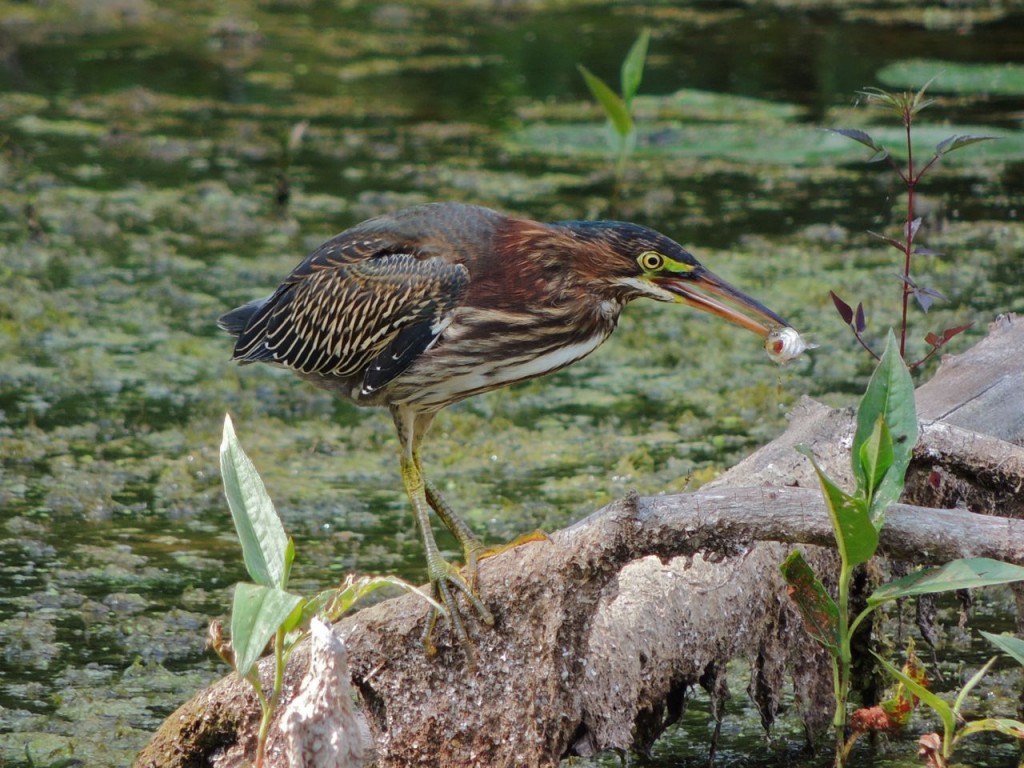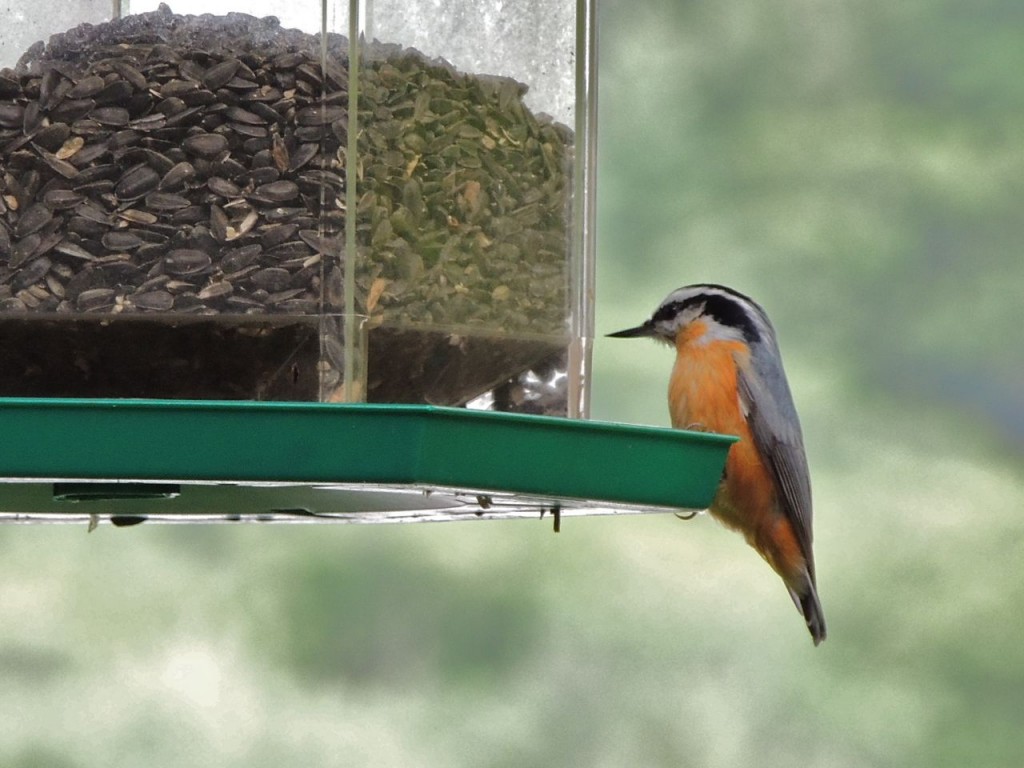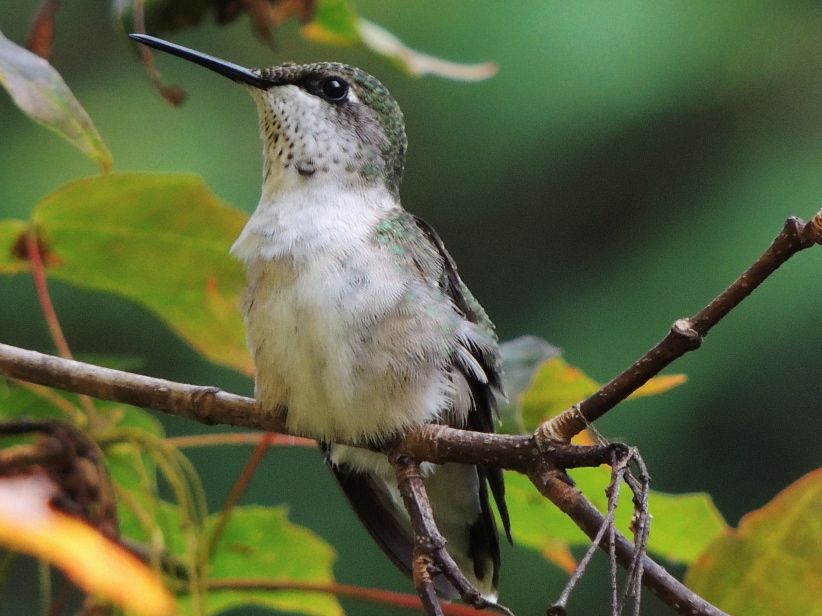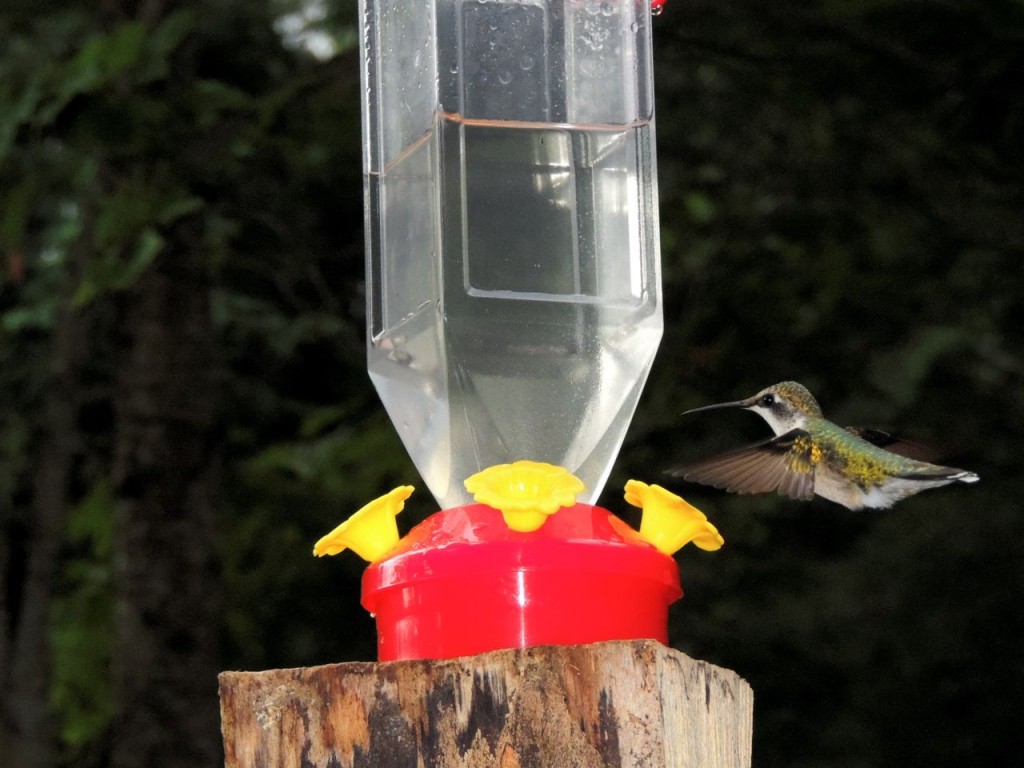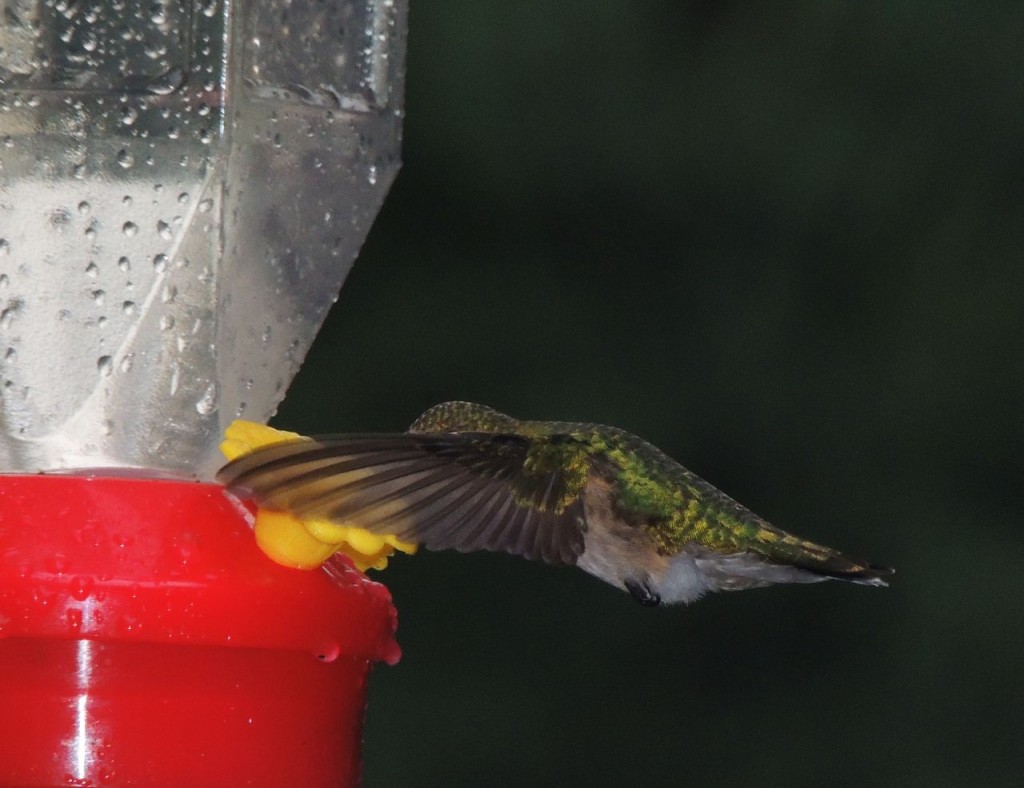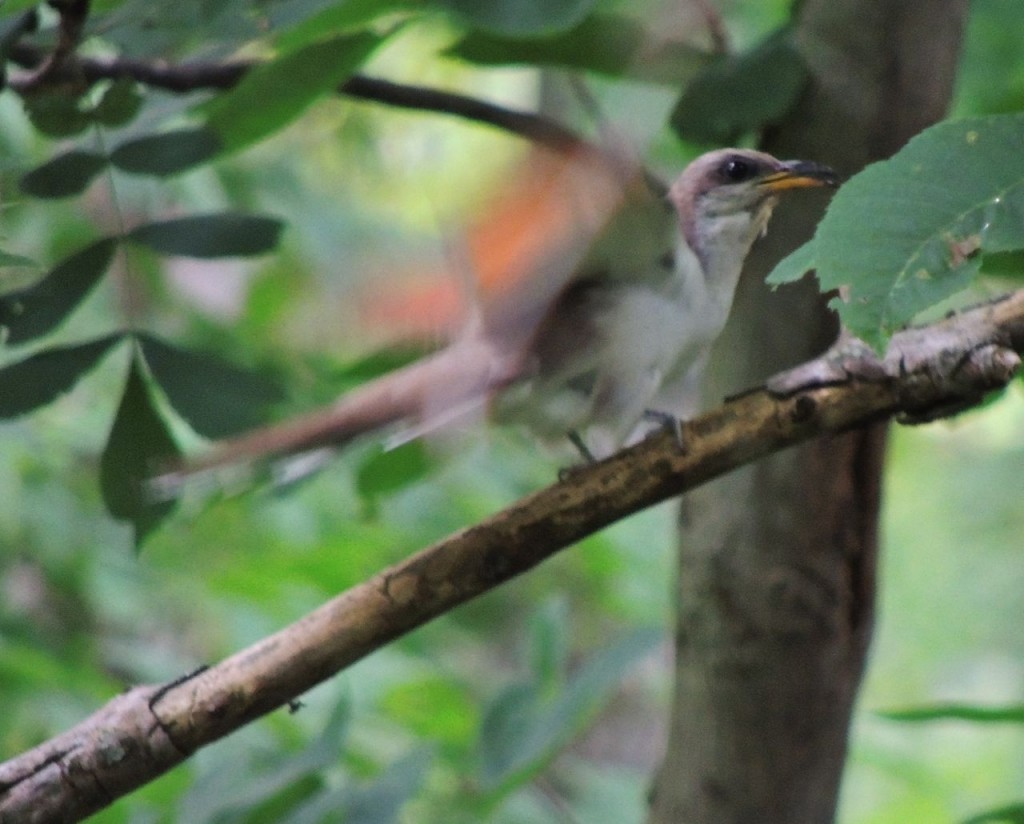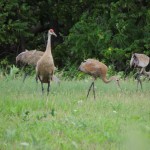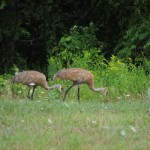27 August 2014. Wainfleet, ON. Late summer is when Arctic-breeding shorebirds leave their fly-bitten, mosquito-infested and windswept breeding grounds and head south to over-winter around tropical beaches, estuaries and lakes. It puts a new spin on birding as a pastime to watch for and identify them. Identification can be tricky and is complicated by a handful of factors: There are many lookalikes that are really hard to tell apart, more so when examined from a distance; The young of the year are often somewhat different from adults, usually their plumage is brighter and crisper. And we only have a short window of opportunity in which to study them, generally four or five weeks.
Today I stopped to investigate an abandoned and partially flooded quarry that is nominally a conservation area but which is, in fact, much the worse for wear from littering and general neglect. A pity since this old quarry has potential, with careful management it could be a wonderful asset, a veritable silk purse out of a sow’s ear. Still, the stop was worthwhile, initially because I could hear a Northern Mockingbird singing nearby and later when I spotted a trio of small shorebirds, (the smaller shorebirds are often referred to as peeps,) feeding along the silty waters-edge about a hundred metres away.
I moved slowly towards the peeps, pausing every now and then to get a for-the-record photograph because frankly I wasn’t at all sure what they were. There are many look-alikes remember and as is the case with the transient warblers of spring, we only see the peeps for a very few weeks each year and it’s easy to forget the lessons of earlier years. Young shorebirds of the Arctic almost certainly have no experiences to guide their response to an approaching person, so I was not entirely surprised that they paid little attention to my slow approach. Eventually I found myself within ten metres of them and sat down slowly to watch. By now I thought I knew what they were, Stilt Sandpipers. My clues: a long bill, bold white eyebrow line, greenish legs and a probing sewing machine feeding action.
Now, I must admit that I wasn’t by any means certain of my i.d. There were other candidates, Short-billed Dowitcher being the most likely, but really I wanted them to be Stilt Sandpipers because I hadn’t, until then, been anywhere close to a Stilt Sandpiper, certainly not as eye-poppingly close as to these three, they’d always been a distant sighting whose identification was confidently proclaimed by others.
So I drank deeply of this close encounter, absorbing detail and pleased to be capturing dozens of shots for later analysis. I was a little unsettled by a patch of rufous blush evident on their necks and sides, a wash of which is clearly evident on adult Short-billed Dowitchers.  (As this May 2012 picture at left shows) Maybe I was looking at juvenile dowitchers, although I felt that size militated against dowitchers and everything else seemed to fit for Stilt Sandpipers.
(As this May 2012 picture at left shows) Maybe I was looking at juvenile dowitchers, although I felt that size militated against dowitchers and everything else seemed to fit for Stilt Sandpipers.
Satisfied eventually with what I’d seen and with a camera full of photos and a sun-scorched neck, I made a slow retreat to consult my in-car field guide, and that’s when doubts about Stilt Sandpipers overtook me. The differences between stilts and dowitchers are there and reasonably clear once you get past first impressions, prejudices and many persuasive similarities. Back home, with access to more and deeper reference materials, I had to concede that I had in fact spent quality time in the presence of three juvenile Short-billed Dowitchers; at least I think so. But no complaints, still very nice Birds of the Day.



